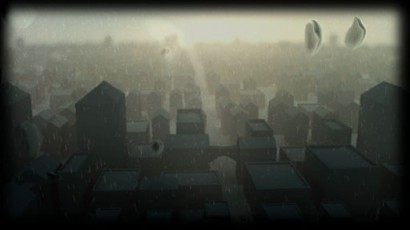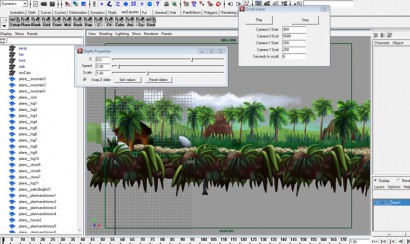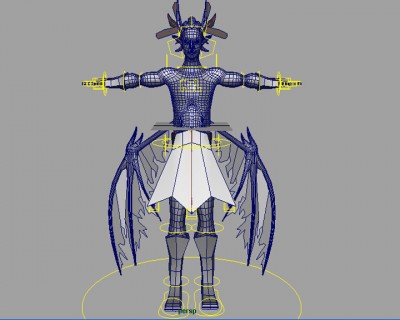A Beginners Guide to Building a Fur Network

Maya Fur is a tool increasingly seen in animation work throughout the industry in recent times, from adverts to such feature films as Monsters Inc. and Shrek. As most computer-generated films strive to impress the audience with realistic special effects. The means to create these effects become more and more complex and technical to accommodate the demand, causing more knowledge to be required to use them. This knowledge may not however be possessed by the newer users of the software, but with the desire to create the final effects, problems arise.
A Physically-based 35mm Stills Camera Simulation

Although there has been extensive rendering research into the simulation of real camera behaviour such as depth of field and motion blur, due to the increased render times these behaviours inherently bring, they are all simulated approximations.
Curve Controlled Deformations
Presenting a method using a curve guided deformation between two meshes with matching vertex count. This allows control over the intermediate positions of the vertices being deformed. Through this method it is also possible to gain
Butterfly Flocking System

For this project I was assigned the task of creating an innovative piece of work within Computer Animation. The aim of this project was to experiment with new ideas and methods, and to learn more about an area of Computer Animation of interest to me. My project was a state machine flocking system of butterflies created using MEL (Maya Embedded Language). This report explains the processes I went through to create my final piece, with references to the research and design.
Computer Generated Rain Effects: The Reason, Representation and Implementation

I have implemented a tool in Maya that has the ability to generated particle simulations that
A Documentation of the Modelling and Rigging Techniques Used to Create a Virtual Toy Transformer and the Possible Applications for it as a Marketing Tool
The objective that I set out to achieve for this project was to create an accurate replica of a toy Transformer robot using 3D computer modelling software and to build a working mechanical rig that would enable him to transform. This allowed me to explore the techniques used to model mechanical, robotic type characters and to understand and gain knowledge about the most apt methods for rigging them. On top of this, I decided to explore the possible uses and applications of my virtual toy model as a marketing tool for the toy company. My objectives provided me with a project that was to be both challenging and innovative. The practical side of this report is targeted at an audience who understand the concepts and terminology of 3D computer modelling and rigging in Alias Maya.
Graphics Workflow for a Side-scrolling Game

This project aims to explore and find a suitable way of creating environments for a proposed side-scrolling adventure game.
Research into Character Rigging

This paper looks into character rigging. It covers many areas of character setup, and
An Investigation into Animation Blending

The art of animation blending has been used in games for many
Camera Matching Plug-in for Maya
My intention in the following paper is to produce a piece of software written in MEL script as a plug-in for Maya which will be a camera matching device and as an aid for computer animators to achieve a successful camera match between live action and CG before compositing so that all aspects are complimentary and the images when composited are visually convincing. If subject distance and spatial information is known it will be possible to position the camera and tilt in the correct direction.
